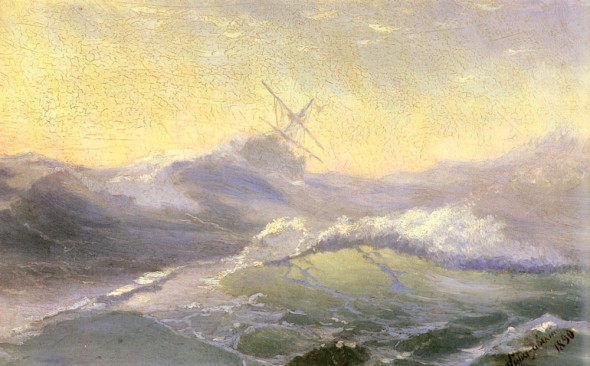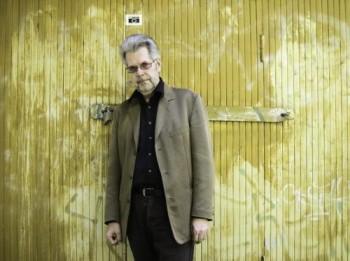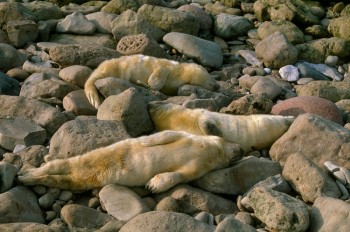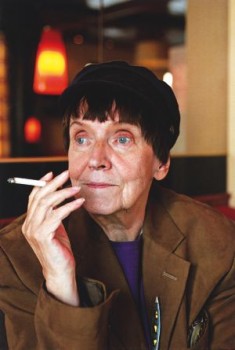Search results for "2011/04/2010/05/song-without-words"
A perfect storm

Bracing the waves. Ivan Aivazovsky, 1890.
According to Petri Tamminen, Finns are burdened by the need to succeed. Instead, he argues they should learn to fail better.
Part comedy, part tragedy, part picaresque novel, with a dash of Joseph Conrad – Tamminen’s new book, Meriromaani. Eräitä valoisia hetkiä merikapteeni Vilhelm Huurnan synkässä elämässä (‘A maritime novel. A few bright moments in Captain Vilhelm Huurna’s sombre life’, Otava, 2015) is set in an indeterminate seafaring past of the 18th or 19th century. It tells the story of the world’s most unsuccessful sea captain, Vilhelm Huurna who, one by one, sinks all the ships he commands.
Tamminen (born 1966) is a master of very short prose – this miniature novel is a a huge undertaking in the context of his work as a whole – and at Books from Finland we’re big fans. You can read more of his work here.
We join the story as Huurna, leaving behind him a failed romance in Viipuri, sets sail for Archangel, on the far north coast of Russia.
![]()
An excerpt from Meriromaani. Eräitä valoisia hetkiä merikapteeni Vilhelm Huurnan synkässä elämässä (‘A maritime novel. A few bright moments in Captain Vilhelm Huurna’s sombre life’, Otava, 2015)
The sun shone on the Arctic Ocean night and day, and the voyage went amazingly well, as did all the tasks and jobs that Huurna particularly feared beforehand.
Ships lay in Archangel harbour like objects on a collector’s shelf. They were waiting for timber cargo from the local sawmills where work was at a standstill because the mills lacked the machines and machine parts that they were now bringing them. When their cargo had been unloaded and the machines installed, timber began arriving from the sawmills. They found themselves at the end of the queue, and after the other ships had departed, one by one, they were still waiting in Archangel. That suited Huurna; in the first few days of his stay he had become acquainted with two English merchants and, through them, had received invitations to parties. He had stood in salons drinking toasts to the honour of this or that and made the acquaintance of some charming ladies into whose eyes he wished to gaze another time. He was quite moved by the whirl of this unexpected social life, and brightened at the thought that there was really nothing to complain about in his life apart from the fact that he happened still to be a bachelor. More…
Nautilus
30 September 1996 | Archives online, Fiction, poetry
Poems from Erotus (WSOY, 1995). Introduction by Lauri Otonkoski
As the future First Mate dreams, embryonic sails in his eyes
and runs, a rat, from one ship to the next in the harbor, so I saw my image in the imago
pushing out of its chrysalis under my father’s hand that held the lens.
His other hand rested on my shoulder like a wing,
‘Resurrection!’ he cried out, and I felt my heart tumble.
And there it was: Parnassius Apollo or Parnassius Mnemosyne mnemosyne
on the glass slide, straightening its flying gear,
and a moment later, a narcotized, trembling piece of jewelry.
I handed my father a shiny pin, and he pushed it skillfully
through the body. Daylight adhered to the collection.
For the duration of the blink of an eye, all butterfly wings breathed. More…
Howl came upon Mr Boo
31 December 1983 | Archives online, Children's books, Drama, Fiction
The first Mr Boo book was published in 1973. Mr Boo has also made his appearance on stage this year; his theatrical companions are the children Mike and Jenny, who are not easily frightened – Mr Boo’s courage is a different matter, as can be seen in the extract from the stage play that follows overleaf.
Hannu Mäkelä describes the birth of Mr Boo:
To be honest, Mr Boo has long been my other self. The first time I drew a character who looked like him, without naming it Boo, I was really thinking of my fifteen year-old self.
The years went by and the Mr Boo drawing was forgotten for a time. It hadn’t occurred to me to write for children; I seemed to have enough to do coping with myself. Then I met Mr Boo, whom I had not yet linked up with my old drawing. My son was about six years old and we had been invited out. There were several children present. As I recall it it was a wet Sunday afternoon. I had entrenched myself with the other grown-ups in the kitchen to drink beer. The noise of the children grew worse and worse (in other words they were enjoying themselves). At last the women could bear it no longer and demanded that I, too, get to work. Really, what right had I always to be sprawled at a table with a beer glass in my hand? None. So I rose and went into the sitting-room. I shouted at the children to form a circle around me. At that time I had a motto: ‘Mäkelä – friend to children and dogs’. The reverse was true of course. The name Mr Boo occurred to me, probably as a result of some obscure private (and possibly even erotic) pun and I begun to tell a story about him. In telling it I paused dramatically and accelerated just as primary school teachers are taught to do: that part of my training, after all, wasn’t wasted. I was astonished; the children listened in complete silence. And if my memory doesn’t fail me (or even if it does, this is the way I wish to remember it), at the end of the story the smallest of the children said, rolling his r’s awkwardly, ‘Hurrrrah’. I was hooked.
The children themselves asked me to tell the same stories again. They still enjoyed them. It wasn’t long before I began to think seriously of writing a whole book about Mr Boo. For the first time in my life I really wanted to write for children. Every day after work I wrote a new Mr Boo story. Then in the evening I read it to my son. That is how the stories grew into a book.
The child likes right to triumph; he likes the good and the moral. The child is the kind of person we adults try in vain to be. It was only through Mr Boo that I began to see children in a totally new way and above all to become seriously interested in them.
One-night stand: an interview with publisher Leevi Lehto
17 September 2010 | Interviews

Leevi Lehto. Photo: Lotta Djupsund/Savukeidas
Founded by poet Leevi Lehto, ntamo is seen by many as the black sheep and enfant terrible of the world of Finnish publishing.
From its inception, ntamo (shortened from the word kustantamo, publishing company) has striven to subvert the familiar conservative models of publishing that audiences are used to.
Ntamo publishes books for small circulation, such as poetry and experimental prose. Its catalogue includes works both by celebrated writers, such as Kari Aronpuro, and by a whole host of authors making their literary debuts.
Lehto’s objective has been to publish as many books as possible, using a system of print on demand, and to have as little to do with the books’ content as possible. What’s more, ntamo’s publications are not marketed at all. Readers can find information on new publications by following the publisher’s blog [in Finnish only]. I met up with Lehto a while ago and we discussed ntamo’s current situation, new trends in the publishing world and the future of books and literature in general. More…
Around zero o’clock
30 June 1996 | Archives online, Fiction, poetry
Poems from the collection Musta oli valkoinen (‘Black was white’, WSOY, 1995). Introduction by Jukka Koskelainen
When?
When I learned to pay attention to unlikely reptiles to surprising glacier waters to nightgowned rejections to wall-mounted assault rifles to traveling angels to lips shaped like promises to mussels swimming in dreams to crashes, rules and funerals to shady, secret sacristies to the indecisiveness of dancing shoes to the immeasurable indifference of looks like bullets to spring, myself and seductions slow as clouds all of these between the words, was that when the difficulties began?
About the third
To stop waiting, the second step.
To be born of woman. The first.
The price of the word and the moon are determined with the same weightless scales.
The third we don’t know about, don’t ask.
On the ear’s walk
The landscape's deepest melody flowed on over the banks of the resounding Middle Ages.
Do you hear, do you hear it
the way a snail hears,
that snail there who teaches
learns from the earth’s replies, learning
the snail hears and gets there,
gets there for sure
even the slow one gets there,
even the slower one will
then get there, it will
surely get there, into the pot.
Herbal wisdom
New churches, old harmonized organs and repetitions like a prayer or a psalm for seven voices. Against scant blue a hundred people believe in pilots and safety belts. The wind just a little too strong.
But my heart it was, that loaded institution through four expectations it came here. Exactly here where you, with both hands, almost inaudibly intended to break the fragrant life of a sprig of thyme.
That soundless break, the speech of dust, said all I understood.
Around zero o’clock
Just be the shape of an angel, be, be be, be a screeching hatful of sleepless night it dresses even the seagulls in diver's suits, be be lazy intellect and come to bed be manager of nightmare and conqueror of desire
to say
Be the disease of saying Be the lifelong remedy which whether you take it or not certainly kills
Be the one who no longer is a dab of the freedom of the void, a flight of three strides out of thought's night be
Because I’m jading
Translated by Anselm Hollo
Travelling alone
30 June 2005 | Fiction, poetry
Poems from Ödemjuka belles lettres från en till en (‘Humble belles lettres from one to one’, Schildts, 2002)
Blind Alley Travel Bureau
We arrive on the last arrival.
Turn the lights out when you go, the airport staff ask.
To this place you and I must travel. It was the only departure
that was called. The only place there is, said the guide.
One’s vision is blocked by the view. We’ll find no somewhere else.
‘When I fall asleep, drive the last stretch by yourselves,’
says the driver.
A last summer family lift him into
their homeward-returning back seat. More…
The pursuit of happiness
30 June 1996 | Archives online, Fiction, Prose
Extracts from the novella Ilo (‘Joy’, Helsinki Media, 1995)
‘The flower is a characteristic feature of the highest group of the plant kingdom – the flowering plants – and is the name given to the association or organs, more or less leaf-like in form, which are concerned with the production of the fruit or seed.’
Encyclopaedia Britannica, 1910
The encyclopedia made us happy. But what was happiness? That the encyclopedia did not say. You had to set out to look for it. Our exploratory party represented the highest achievements of the field: it would be difficult to find a more serious or committed group.
When we waved to the people cheering on the quay, we were overcome by a strange feeling. It was as if we had already arrived. I made the mistake of speaking my thought aloud.
‘It will all end in tears,’ remarked our welfare officer, Mrs Rose. The atmosphere was ruined. What a pity that our quick-witted Doctor Stratelli was not present at that moment! For it was he who solved the problem of happiness.
The pearl
30 December 1999 | Fiction, Prose
A short story from Tutkimusmatkailija ja muita tarinoita (‘The explorer and other stories’, Loki-kirjat, 1999)
My name is Jan Stabulas. I am one of the quietest and inconspicuous workers in our department store, this giant ant-heap swarming with people. No one really pays any attention to me, although I am on show all the time. My job is quite simple: to stand in the menswear department, dressed in fashionable clothes. Now that doesn’t take much, I have heard it said. Well, try it yourself. Try standing for ten hours, without moving, in an awkward, even an unnatural, position, wishing that the air conditioning would work when it was hot, or that it would be switched off when you can feel the draught cutting you to the marrow. Think how the customers stare at you as they pass by, like an object which they cannot buy, and consider your words once more. More…
Sealspotting
14 June 2009 | Reviews

Zzzzzzz! In the grey seal kindergarten babies take a nap after dinner. – Photo: Seppo Keränen
Taskinen, Juha
Paluu Saimaalle
[Return to Lake Saimaa]
Helsinki: WSOY, 2009. 204 p., ill.
ISBN 978-951-0-33745-5
€ 38.90, hardback
Keränen, Seppo & Lappalainen, Markku
Hylkeet [The seals]
Helsinki: Maahenki, 2009. 151 p., ill.
ISBN 978-952-56-5266-6
€ 45, hardback
Sälar
Helsingfors: Söderströms, 2009.
151 p., ill.
Swedish translation: Annika Luther
ISBN 978-951-52-2603-7
€ 45, hardback
The private life of the species of seal that lives only in Lake Saimaa has been carefully investigated lately. Almost everything about this highly endangered species has been revealed, thanks to technological devices such as transmitters that can be glued to their backs…
STOP! WARNING: as I realise that not everybody wants to know what pinnipeds do in their spare time, I suggest you quit reading now, if you aren’t interested in the lives and fates of an obscure group of about 260 mammals that live in a lake in the remote west of Finland.
The son of the chimera
30 September 1999 | Fiction, Prose
A short story from Pereat mundus. Romaani, eräänlainen (‘Pereat mundus. A novel, sort of’, WSOY, 1998)
I was born, but not because anyone wanted it to happen. No one even knew it was possible, for my mother was a human being, my father a chimera. He was one of the first multi-species hybrids.
Only one picture of my father survives. It is not a photograph, but a water-colour, painted by my mother. My father is sitting in an armchair, book in hand, one cloven hoof placed delicately on top of the other. According to my mother, he liked to leaf through illustrated books, although he never learned to read. He is wearing an elegant, muted blue suit jacket, but no trousers at all. Thick grey fur covers his strong legs, right down to his hoofs. Small horns curve gracefully over his convex forehead. Striking in his face are his round, yellow eyes, his extraordinarily wide mouth, his tiny chin and his surprisingly large but flat nose. More…


